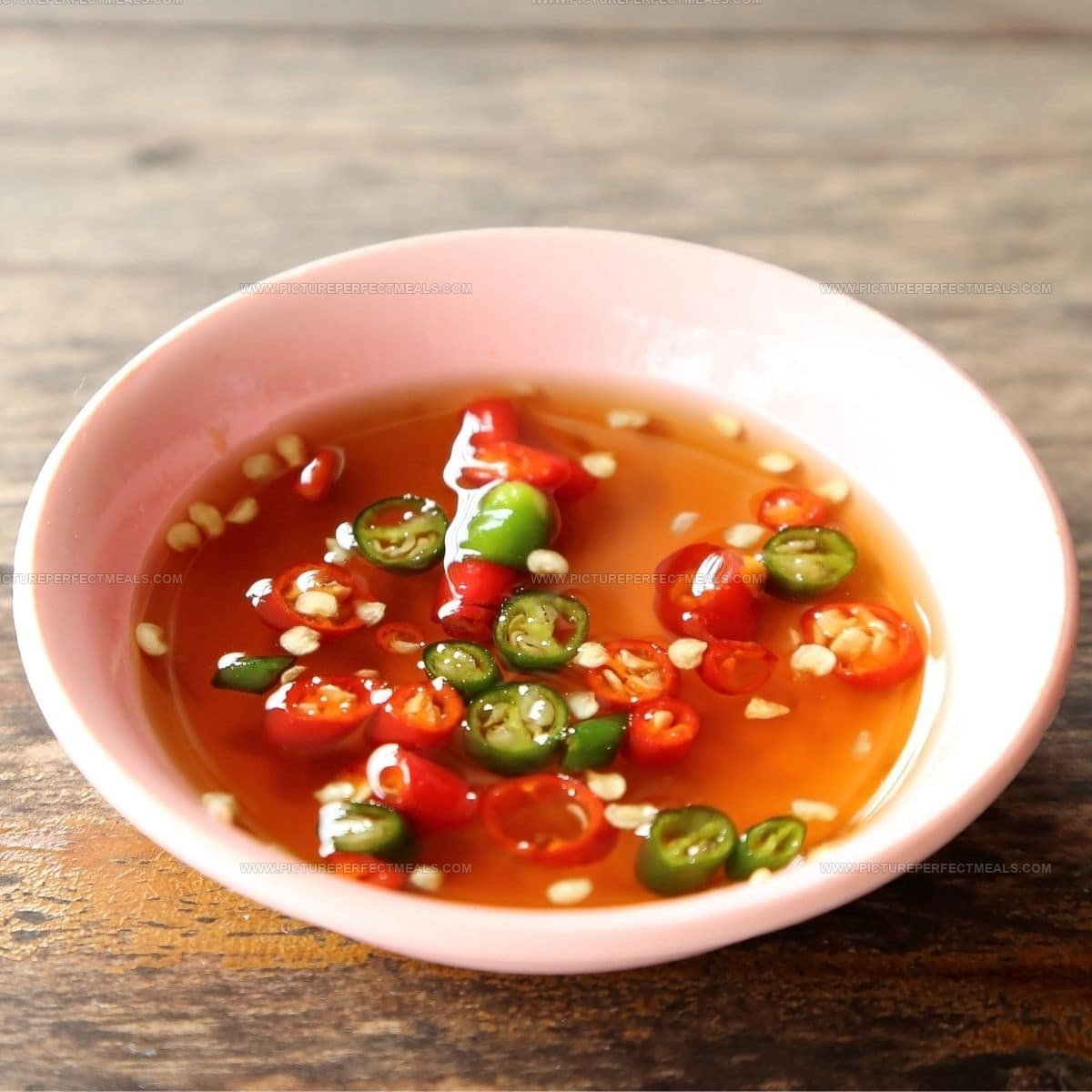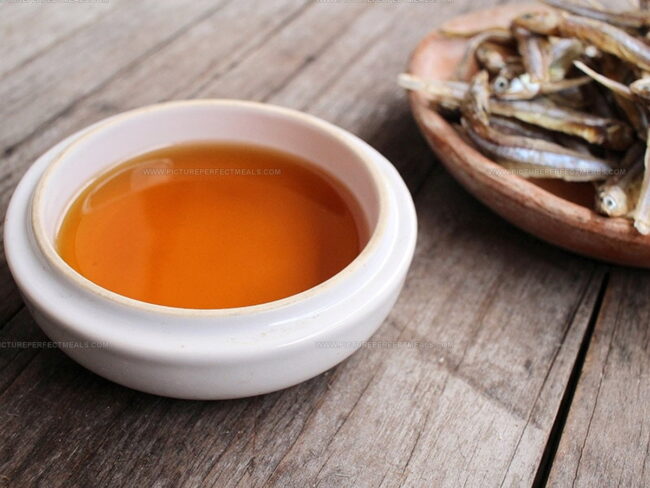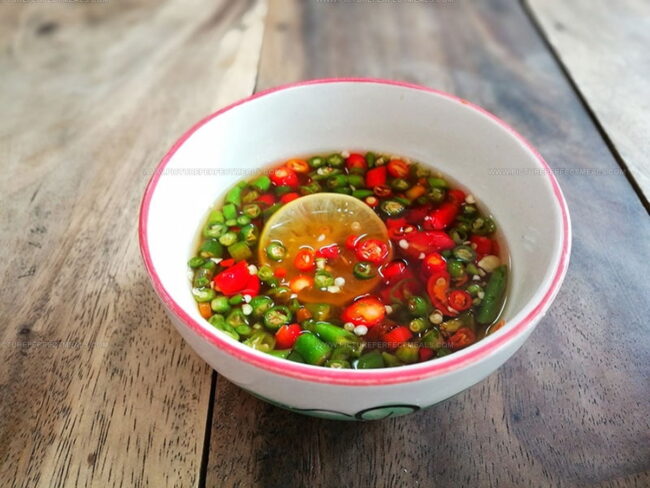10 Flavorful Alternatives to Fish Sauce
Fish sauce adds intense umami and salty depth to Southeast Asian dishes, but its pungent aroma can be off-putting or unavailable.
Luckily, several substitutes provide comparable savory complexity without overpowering dishes.
Soy sauce, tamari, or fermented bean pastes offer alternatives that work well in marinades, soups, and stir-fries.
These ten fish sauce substitutes offer both traditional and vegan-friendly options.
Knowing how to balance saltiness and fermentation notes helps maintain authentic flavors.
Use these creative swaps to elevate your cooking when fish sauce isn’t an option.
The Flavor and Texture of Fish Sauce
Fish sauce has a bold, complex flavor that’s often described as deeply savory, salty, and rich in umami. It’s made by fermenting fish (usually anchovies) with salt over several months, which creates a concentrated liquid packed with natural glutamates - the compounds responsible for that mouthwatering, savory taste.
Though it smells strong right out of the bottle, the flavor mellows when mixed into dishes, blending in to enhance other ingredients rather than standing out on its own.
As for texture, fish sauce is thin and watery - closer to soy sauce than a thick condiment. It pours easily and mixes well into liquids, sauces, marinades, and dressings without needing to be thinned. That light consistency makes it easy to spread flavor evenly through a dish.
The Greatest Fish Sauce Substitutes
Fish sauce substitutes maintain savory umami and saltiness in Asian dishes with vegetarian and gluten-free alternatives. Multiple sauces offer delicious options. Discover the greatest replacements to try.
Soy Sauce
Soy sauce stands as the top fish sauce substitute due to its convenient one-to-one swap ratio and common presence in most kitchens around the world.
Many people simply grab the bottle from their pantry when fish sauce runs out, making it an easy solution in a pinch.
The flavor profile isn't identical since soy sauce tends to be saltier and lacks the complex depth that authentic fish sauce provides to dishes.
In noodle meals, fried rice, and stir-fries, this difference might go unnoticed, but recipes featuring fish sauce as a star ingredient may taste noticeably different with just soy sauce alone.
For a closer match to the original taste, adding one minced anchovy per tablespoon of soy sauce creates that distinctive fishy element that makes fish sauce so special in Southeast Asian cooking.
Tamari Sauce
Tamari sauce stands as a popular soy sauce alternative, offering a rich, earthy flavor with less saltiness than its counterpart.
Most brands are gluten-free, making it ideal for those with dietary restrictions, though always check the label since not all varieties skip the gluten.
For recipes calling for fish sauce, tamari works perfectly in a one-to-one ratio, perhaps with a pinch of salt to enhance the taste profile.
Non-vegetarians might consider adding anchovies to boost the umami and fishy notes that traditional fish sauce provides.
Rice vinegar combinations can serve as excellent substitutes for vegans and vegetarians looking to maintain authentic flavor without animal products.
The deep, complex taste of tamari brings dishes to life while accommodating various dietary needs.
Oyster Sauce
Oyster sauce stands out as the top substitute for fish sauce, offering a seamless replacement in a one-to-one ratio that works perfectly in stir-fries and other dishes.
The main difference between these two sauces comes down to sugar content, with oyster sauce having a sweet-and-salty profile while fish sauce lacks sweetness entirely.
This substitute also has a thicker consistency than traditional fish sauce, though adding a splash of water can easily thin it out and reduce some of the sweetness.
Many cooks actually prefer oyster sauce in certain recipes because its milder taste doesn't overpower delicate ingredients like fish sauce sometimes can.
For those concerned about dietary restrictions, most grocery stores now carry vegetarian versions made from mushrooms rather than actual oysters.
Worcestershire Sauce
Substituting Worcestershire sauce for fish sauce makes perfect sense due to their shared savory characteristics.
Most families already keep Worcestershire in their kitchen cabinets, making it a convenient alternative when fish sauce isn't available.
The salty, umami-rich flavor profile works remarkably well because Worcestershire actually contains fermented fish as a main ingredient.
Few people realize that anchovies serve as a foundation for this common condiment, creating that distinctive depth of flavor we love.
Both sauces deliver similar complexity to dishes, though Worcestershire includes additional spices and aromatics that complement many recipes.
Simply use equal amounts when making the swap, and most dinner guests won't detect any difference in your favorite Asian-inspired meals.
Hoisin Sauce
Substituting hoison sauce for fish sauce doesn't quite work on its own because it's too thick and sweet for most dishes.
Many cooks have discovered that mixing hoison with soy sauce creates an excellent fish sauce alternative that better captures the original flavor profile.
The perfect ratio seems to be equal parts of each - for a half-cup of fish sauce, use a quarter-cup hoison and a quarter-cup soy sauce.
This balanced combination delivers the essential saltiness and umami depth while taming the excessive sweetness of hoison sauce.
The mixture works particularly well in stir-fries, marinades, and dipping sauces where fish sauce would typically add that distinctive savory note.
Coconut Aminos
Substituting coconut aminos for fish sauce doesn't always work with the commonly suggested one-to-one ratio, despite what many cooking guides claim.
My personal experience shows that using about three-quarters coconut aminos with a small dash of soy sauce creates a much better flavor balance in most recipes.
This combination delivers the rich umami depth you're looking for while adding a slight sweetness that complements many Asian dishes.
Coconut aminos offer significant benefits for people with dietary restrictions since they're naturally gluten-free and can be fully vegan-friendly when used without the soy sauce addition.
The resulting flavor won't perfectly match traditional fish sauce, but most dinner guests won't notice the difference in your finished dishes.
Fish Broth
Fish sauce can be replaced with fish broth in a one-to-one ratio when that distinctive fishy flavor is what matters most in your recipe.
A small amount of cornstarch helps thicken the broth to match the sauce's consistency - just add it gradually while stirring until you reach the right thickness.
The substitution typically requires additional salt since fish sauce contains higher sodium levels than most broths.
Many people find this swap works beautifully in soups, stews, and marinades without compromising the seafood essence.
For an even closer match, a splash of soy sauce mixed into the fish broth brings depth and umami that rounds out the flavor profile.
Seaweed
Seaweed offers a fantastic fish sauce substitute that many cooks overlook despite its vegan-friendly and all-natural qualities.
The umami-rich flavor profile makes it perfect for sushi, sandwich wraps, and various Asian dishes where fish sauce would typically shine.
Getting the substitution ratio right requires some patience since you're essentially replacing a liquid with a solid ingredient.
My best advice is to start with half the amount you think you need, then gradually add more while tasting frequently until the dish reaches your desired flavor intensity.
The potent nature of seaweed might surprise you at first, but this powerful ingredient rewards careful experimentation with delicious results that even non-vegans will appreciate.
Liquid Aminos
Liquid aminos offer a fantastic vegan and gluten-free substitute for fish sauce, providing a similar salty flavor profile that many recipes require.
The simple combination of soy and salt creates a reasonable alternative, though it lacks some of the deep umami punch found in traditional fish sauce.
For those who aren't strictly vegetarian, adding anchovy filets can enhance the fishy taste and bring the flavor closer to authentic fish sauce.
The substitution is straightforward with a one-to-one ratio, making it easy to adjust your recipes without complicated measurements.
One anchovy filet per tablespoon of liquid aminos is all you need if you choose to incorporate this flavor-boosting addition.
Vegan Fish Sauce
Vegan fish sauce offers a perfect substitute for traditional fish sauce in your favorite recipes.
Homemade versions can be crafted with simple ingredients like soy sauce, tamari, shiitake mushrooms, or seaweed to capture that savory umami flavor.
Many online retailers now stock ready-made options for those busy days when cooking from scratch isn't possible.
Some specialty grocery stores carry these plant-based alternatives, though they might require a bit of searching compared to standard items.
For best results, just replace regular fish sauce with an equal amount of the vegan version in any dish that calls for it.
Making Homemade Fish Sauce
You can create a quick substitute by simmering flavorful plant-based or pantry ingredients that bring similar richness:
How To Use Fish Sauce Substitutes in Recipes
This section will show you how to use fish sauce substitutes across different types of recipes and still keep flavors balanced and natural.
Soups and Broths
Add the substitute early in cooking so it has time to blend into the base. Choose something light, salty, and umami-rich to mimic fish sauce’s depth.
Stir-Fries and Sautés
Mix the substitute into your sauce or add directly to the pan while tossing ingredients. Go for something bold and salty that stands up to high heat.
Add in small amounts and taste as you go to avoid overpowering veggies or proteins.
Marinades
Combine the substitute with acid (like citrus or vinegar), oil, and sweetener for balance. A rich, fermented-tasting swap adds depth and helps tenderize meats or tofu.
Let it sit with the protein for at least 20–30 minutes so the flavor soaks in.
Stews, Curries, and Braises
Add the substitute near the beginning with the other liquids. Choose something earthy and rich to match fish sauce’s slow-building flavor.
Long simmering helps mellow sharper notes and develop a deeper taste.
Fried Rice and Noodle Dishes
Stir in the substitute toward the end of cooking. Adjust with a pinch of sugar or citrus if needed for balance.





Jenna Hartley
Founder & Recipe Creator
Expertise
Education
Box Hill Institute, Melbourne
William Angliss Institute, Melbourne
Jenna is the heart of Picture Perfect Meals, turning simple ingredients into beautiful, easy‑to‑make dishes.
Growing up around family meals in Melbourne, she trained at Box Hill Institute and then perfected her pastry skills at William Angliss Institute. She loves mixing classic Australian flavors with fresh ideas to keep cooking fun and stress‑free.